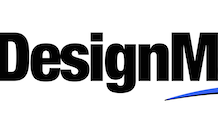Printers need to focus on marketing to be more customer-centric. Focusing on the experience and information customers have about their digital print services and solutions is key to increasing the bottom line.
With that in mind, Printing SA recently hosted a free webinar on helping you focus on growing your digital print business. The webinar was chaired by Abisha Katerere, Head of Marketing and B-BEE Specialist at Printing SA.
Jean Lloyd, Owner, Jean Lloyd Consulting
What advice would you give to someone wanting to invest in digital technology?
Lloyd advised businesses to identify their objective, be it faster production, personalisation, workflow efficiency, economical shorter run work, or all of the above. She also emphasised the importance of choosing the right vendor that has the expertise to assist you in your transition. If you have a range of equipment choices, make sure your choice fits into the market that you will be supplying.
Before your investment, get the brand’s, marketer’s or publisher’s approval on quality and substrates before you invest. Does your local vendor offer support and training for your sales people? Do you have the right volume of work to justify your investment? Your digital press, be it a toner or inkjet press, is a marketing tool, and it is what you are going to do with it that will be your key differentiator. But without the right software and finishing devices, you are just putting ink on paper.
How important is it to have the right sales people/support staff on board?
Lloyd said that having an educated sales team is absolutely critical and this has to be part of your ‘go to market’ strategy. All your staff and management need to buy in to the digital concept, and you need to have a strategic change in your sales processes as well as what you are going to be doing as a business. Migrating volumes from offset to digital will be a challenge that needs to be planned around.
Lloyd also said that not all sales people are excited about the new changes and opportunities as these are out of their comfort zone – someone once called it, ‘new tech nerves’. Hire or train someone internally that ‘gets it’ and label them the ‘digital champion’ and the go-to person within the organisation when it comes to digital. ‘Have that champion that can talk that talk with publishers, brand owners and marketers.’
Another important factor raised was for digital printers to do their part in up-skilling the industry, which would help address the issue of brand and advertising agencies continuing to place orders outside of South Africa.
Where do you see the future of print?
‘Online and automation are what printers need to be focused on for now.’
Tertius Van Eeden, Managing Director of Print On Demand
What challenges did you face with publishers and how did you overcome them?
‘Publishers base their value on the lowest unit cost. We believe that it is about significantly reducing the overall operational cost, which can then be directly delivered to your bottom line,’ said Van Eeden.
You have made investments in the digital printing space, can you please give some insights for those who might be considering some of those investments?
Van Eeden emphasised on the choice of software one uses to make the business a success, as well as the right choice of equipment. His company is also looking at further investment in equipment to open much wider markets.
Where do you see the future of print in the next five to ten years?
‘At this stage it is very challenging to predict the demand going forward. As we know, all the run lengths have been shortened and people are looking at not spending as much money. So then you are looking at ordering on demand,’ said Van Eeden.
‘We see the value in book printing. Is our market ready for it? It is something we are trying to carve out for ourselves, but I do think customers are going to respond quicker with the click of a button – they don’t want to go through an entire process. It is going to be driven by automated workflows, dynamic digital printing equipment and by online distribution.’
Vanessa Wilson, Owner and Publishing Director of Quickfox Publishing and Owner of Publisher.co.za, an independent online bookstore
What are the main challenges as a publisher and reseller of print products when it comes to digital printing in South Africa?
Wilson agreed with Van Eeeden that unit costs are very important mostly because print volumes are so low and book production costs are so high, among other additional costs.
‘Digital technology should make things so much easier, and it lends itself to the automation of many processes. As a reseller, a challenge is the lack of efficiency and smooth processes between getting a price, placing an order and receiving the print job. I find that South Africa lags behind in their online processes. With digital technology, you shouldn’t really be interacting with customers that much – each interaction costs money.’ Wilson added that improved pricing and being able to calculate prices online would make a difference.
What is the perception or experience concerning the way print companies do business with customers?
Wilson said that one has to make things easier for the customer, and that companies need a website as there is not a great deal of information available. She said that previously, it was about business to business interactions, whereas today it is now business to customer, but customers don’t have any experience in preparing files, paper choice and other important information to spec a job. This could be provided online. Information for the customer is key – this can be provided through webinars to keep them updated, product updates and company websites.
What advice would you give to somebody who is looking into printing for publishing and the reselling of print products?
‘One of the first things we need to do is become familiar with the publishing space. For example, understand what most books are printed on, what are the most popular papers and why.’
Wilson also stressed the need to understand the mentality of self-publishing authors, saying they are not very knowledgable on the process of publishing, and that they require consultation and guidance from the printers. It should not be assumed that authors understand the process. Knowing this and providing the right information can save costs. Streamlining costs and automation are also important factors.
Kylie Lloyd, Cross Media Marketing and Web2Print Business Development Manager at Remata Print and Communication
What effect has technology made on the industry?
‘2020 has shown us the acceleration of technology. A lot of the time, print in the marketing mix is just seen as something additional, whereas I see it as key. It took a pandemic for people to start using QR codes and the power of a QR code blows my mind when you know what you can do with it.’
She added that in South Africa, skills are not short in the digital space, but limited in the printing industry because the mindset is still very traditional.
Where do you see the future of print in the next five to ten years?
‘It will involve a lot more technology: personalisation, personalised catalogues, variable packaging, Augmented Reality as well as tangible human pieces with elements on each individual page that gives a different experience. Creating experiences is what we are heading towards.’
Watch the full webinar here:
+27112871160
info@printingsa.org
http://www.printingsa.org





















